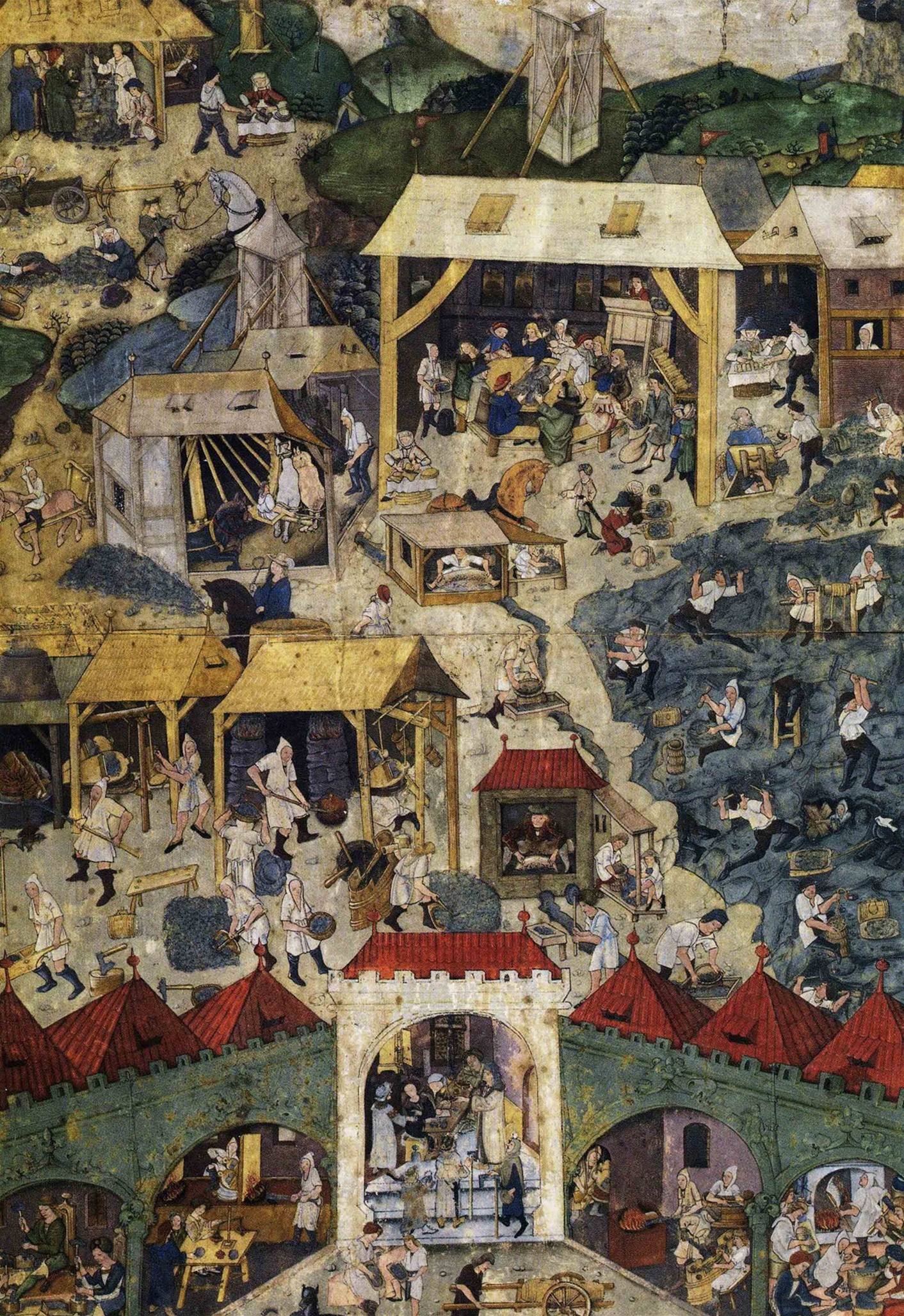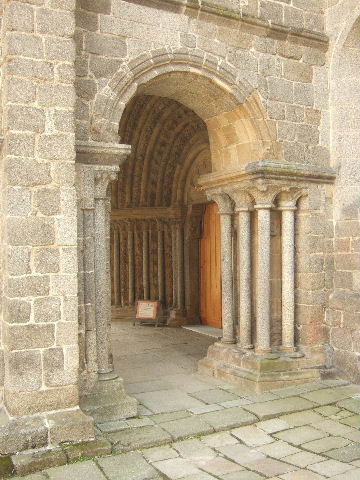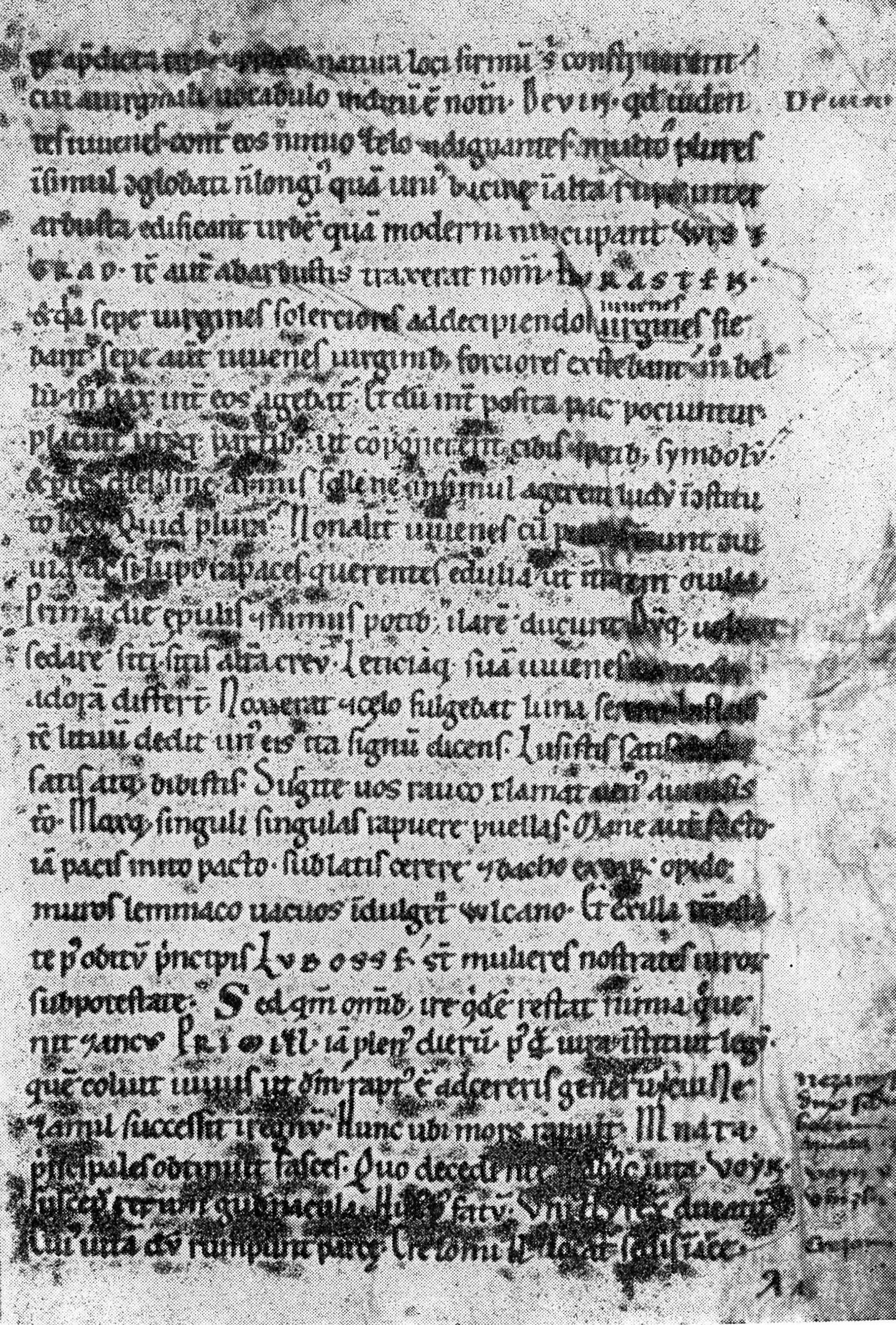|
Habry
Habry (german: Habern) is a town in Havlíčkův Brod District in the Vysočina Region of the Czech Republic. It has about 1,300 inhabitants. Administrative parts Villages of Frýdnava, Lubno and Zboží are administrative parts of Habry. Etymology The name literally means 'hornbeams'. Geography Habry is located about north of Havlíčkův Brod. It lies in the Upper Sázava Hills. The highest point is at above sea level. The Sázavka Stream flows through the town. The town is situated on the shore of Haberský Pond. History The first written mention of Habry is in ''Chronica Boemorum'' and refers to the year 1101, when Duke Ulrich I passed through Habry. It was a market settlement on an ancient trade route. In 1351, Habry was promoted to a market town. In 1909, it was promoted to a town. Demographics Transport The I/38 road (the section from Havlíčkův Brod to Kutná Hora) passes through the town. Sights The Church of the Assumption of the Virgin Mary has an early Got ... [...More Info...] [...Related Items...] OR: [Wikipedia] [Google] [Baidu] |
Habry - Kostel Nanebevzetí Panny Marie (duben 2023) (4)
Habry (german: Habern) is a town in Havlíčkův Brod District in the Vysočina Region of the Czech Republic. It has about 1,300 inhabitants. Administrative parts Villages of Frýdnava, Lubno and Zboží are administrative parts of Habry. Etymology The name literally means ' hornbeams'. Geography Habry is located about north of Havlíčkův Brod. It lies in the Upper Sázava Hills. The highest point is at above sea level. The Sázavka Stream flows through the town. The town is situated on the shore of Haberský Pond. History The first written mention of Habry is in '' Chronica Boemorum'' and refers to the year 1101, when Duke Ulrich I passed through Habry. It was a market settlement on an ancient trade route. In 1351, Habry was promoted to a market town. In 1909, it was promoted to a town. Demographics Transport The I/38 road (the section from Havlíčkův Brod to Kutná Hora Kutná Hora (; medieval Czech: ''Hory Kutné''; german: Kuttenberg) is a town in the Central ... [...More Info...] [...Related Items...] OR: [Wikipedia] [Google] [Baidu] |
František Ladislav Chleborád
František Ladislav Chleborád (24 November 1839 – 20 July 1911) was a Czech political economist and a pioneer of cooperatives. Biography Born in Habry in Bohemia, part of the Austrian Empire, he graduated ''Staroměstské gymnázium'' (''Old Town Grammar School'') in Prague and went on to study law and political economy. Being fluent in Bulgarian, Russian, German, Serbian or French, Chleborád travelled the world and became an honorary consul of the Republic of Venezuela. He held many posts during his active career, including the chairman of the Brno Sokol, and leadership roles in financial institutions and banks. Chleborád was prominent for founding the worker's cooperatives, named ''Oul'' ( 19th century Czech for ''beehive''), encouraging workers to unite and to be educated. The organization was inspired by the ideas of Schulze-Delitzsch. The Czech mutual aid movement then spread outside of Prague and was also established in Brno and Liberec.Institute of Marxism ... [...More Info...] [...Related Items...] OR: [Wikipedia] [Google] [Baidu] |
Havlíčkův Brod District
Havlíčkův Brod District ( cs, okres Havlíčkův Brod) is a district in the Vysočina Region of the Czech Republic. Its capital is the town of Havlíčkův Brod. Administrative division Havlíčkův Brod District is divided into three administrative districts of municipalities with extended competence: Havlíčkův Brod, Chotěboř and Světlá nad Sázavou. List of municipalities Towns are marked in bold and market towns in ''italics'': Bačkov - Bartoušov - Bělá - Bezděkov - Bojiště - Boňkov - Borek - Břevnice - Čachotín - Čečkovice - ''Česká Bělá'' - Chotěboř - Chrtníč - Chřenovice - Číhošť - Dlouhá Ves - Dolní Krupá - Dolní Město - Dolní Sokolovec - Druhanov - Golčův Jeníkov - Habry - ''Havlíčkova Borová'' - Havlíčkův Brod - Herálec - Heřmanice - Hněvkovice - Horní Krupá - Horní Paseka - Hradec - Hurtova Lhota - Jedlá - Jeřišno - Jilem - Jitkov - Kámen - Kamenná Lhota - Klokočov - Knyk - K ... [...More Info...] [...Related Items...] OR: [Wikipedia] [Google] [Baidu] |
Obec
Obec (plural: ''obce'') is the Czech language, Czech and Slovak language, Slovak word for a municipality (in the Czech Republic, in Slovakia and abroad). The literal meaning of the word is "Intentional community, commune" or "community". It is the smallest administrative unit that is governed by elected representatives. Cities and towns are also municipalities. Definition Legal definition (according to the Czech code of law with similar definition in the Slovak code of law) is: ''"The municipality is a basic territorial self-governing community of citizens; it forms a territorial unit, which is defined by the boundary of the municipality."'' Every municipality is composed of one or more cadastre, cadastral areas. Every municipality is composed of one or more administrative parts, usually called town parts or villages. A municipality can have its own flag and coat of arms. Czech Republic Almost whole area of the republic is divided into municipalities, with the only exception be ... [...More Info...] [...Related Items...] OR: [Wikipedia] [Google] [Baidu] |
Upper Sázava Hills
Upper may refer to: * Shoe upper or ''vamp'', the part of a shoe on the top of the foot * Stimulant, drugs which induce temporary improvements in either mental or physical function or both * ''Upper'', the original film title for the 2013 found footage film ''The Upper Footage ''The Upper Footage'' (also known as ''Upper'') is a 2013 found footage film written and directed by Justin Cole. First released on January 31, 2013 to a limited run of midnight theatrical screenings at Landmark’s Sunshine Cinema in New York Cit ...'' See also {{Disambiguation ... [...More Info...] [...Related Items...] OR: [Wikipedia] [Google] [Baidu] |
Mannerism
Mannerism, which may also be known as Late Renaissance, is a style in European art that emerged in the later years of the Italian High Renaissance around 1520, spreading by about 1530 and lasting until about the end of the 16th century in Italy, when the Baroque style largely replaced it. Northern Mannerism continued into the early 17th century. Mannerism encompasses a variety of approaches influenced by, and reacting to, the harmonious ideals associated with artists such as Leonardo da Vinci, Raphael, Vasari, and early Michelangelo. Where High Renaissance art emphasizes proportion, balance, and ideal beauty, Mannerism exaggerates such qualities, often resulting in compositions that are asymmetrical or unnaturally elegant.Gombrich 1995, . Notable for its artificial (as opposed to naturalistic) qualities, this artistic style privileges compositional tension and instability rather than the balance and clarity of earlier Renaissance painting. Mannerism in literature and music is not ... [...More Info...] [...Related Items...] OR: [Wikipedia] [Google] [Baidu] |
Kutná Hora
Kutná Hora (; medieval Czech: ''Hory Kutné''; german: Kuttenberg) is a town in the Central Bohemian Region of the Czech Republic. It has about 20,000 inhabitants. The centre of Kutná Hora, including the Sedlec Abbey and its ossuary, was designated a UNESCO World Heritage Site in 1995 because of its outstanding architecture and its influence on subsequent architectural developments in other Central European city centres. Since 1961, the town centre is also protected by law as an urban monument reservation, the fourth largest in the country. Administrative parts The town is made up of twelve town parts and villages: *Kutná Hora-Vnitřní Město *Hlouška *Kaňk *Karlov *Malín *Neškaredice *Perštejnec *Poličany *Sedlec *Šipší *Vrchlice *Žižkov Geography Kutná Hora is located about east of Prague. It lies on the Vrchlice stream. The eastern part of the municipal territory lies in a flat agricultural landscape of the Central Elbe Table lowland. The western part lies i ... [...More Info...] [...Related Items...] OR: [Wikipedia] [Google] [Baidu] |
Městys
Městys (or, unofficially or obsolete, městečko (literally "small town")), translated as "market town", is a status conferred on certain municipalities in the Czech Republic, lying in terms of size and importance higher than that of simple ''obec'' (municipality), but lower than that of ''město'' (city, town). Historically a ''městys'' was a locality which had the right to stage livestock markets (and some other "extraordinary" and annual markets), and it is therefore translated as "market town". The term went out of official use in Czechoslovakia in 1954, but was reintroduced in the Czech Republic in 2006. As of September 2020, there are 228 municipalities on which the status of ''městys'' has been re-admitted. In all cases, these are municipalities that have requested the return of their former title. This title has not been newly awarded to any municipality that would not have it in the past, the law does not even set any specific criteria for it, only procedural competenc ... [...More Info...] [...Related Items...] OR: [Wikipedia] [Google] [Baidu] |
Ulrich I, Duke Of Brno
Ulrich I, Duke of Brno (, , la, Udalricus Brunensis; 11th century – 5 January 1113) was the Duke of Moravia for twenty one years - between 1092 and 1113. He was the first son and successor of Conrad I, Duke of Bohemia (died 1092) and Wirpirk of Tengling. He did not succeed as half ruler of Moravia ( diarch), for all half of Moravia (the west one) as his father Conrad I, but Brno was divided into two parts: Brno and Znojmo and Ulrich was co-ruler in this part with his brother Luitpold of Znojmo. Both brothers together established a |
Chronica Boemorum
The ''Chronica Boemorum'' (Chronicle of the Czechs, or Bohemians) is the first Latin chronicle in which the history of the Czech lands has been consistently and relatively fully described. It was written in 1119–1125 by Cosmas of Prague. The manuscript includes information about historical events in Czech land from ancient times to the first quarter of the 12th century. At the same time, the Chronicle is not limited to Czech national historiography, also revealing the relationship between various European states during the 10th–12th centuries. The author of the chronicle had been known as the dean of the chapter of St. Vitus Cathedral in Prague Cosmas of Prague. Being a valuable historical source, especially as it relates to events whose contemporary was Cosmas, the Czech Chronicle in many respects set the direction for the subsequent development of the Czech annals. The chronicler worked on the chronicle until his death in 1125. Despite of some inaccuracies and a vivid ex ... [...More Info...] [...Related Items...] OR: [Wikipedia] [Google] [Baidu] |
Havlíčkův Brod
Havlíčkův Brod (, until 1945 Německý Brod; german: Deutschbrod) is a town in Havlíčkův Brod District in the Vysočina Region of the Czech Republic. It has about 23,000 inhabitants. The town centre is well preserved and is protected by law as an Cultural monument (Czech Republic)#Monument zones, urban monument zone. Administrative parts Villages of Březinka, Herlify, Jilemník, Klanečná, Květnov, Mírovka, Poděbaby, Šmolovy, Suchá, Svatý Kříž, Termesivy, Veselice and Zbožice are administrative parts of Havlíčkův Brod. Jilemník and Zbožice form two Enclave and exclave, exclaves of the municipal territory. Etymology The Czech language, Czech word ''brod'' means "Ford (river), ford". The town was firstly named Brod and then Smilův Brod ("Smil's Ford") after its founder Smil of Lichtenburk. In the 14th century it was renamed Německý Brod ("German Ford") because of its predominantly German population. Because of Anti-German sentiment after World War II, the ... [...More Info...] [...Related Items...] OR: [Wikipedia] [Google] [Baidu] |
Regions Of The Czech Republic
Regions of the Czech Republic ( cs, kraj, plural: ''kraje'') are higher-level territorial self-governing units of the Czech Republic. Every region is governed by a regional council, headed by a governor (''hejtman''). Elections to regional councils take place every four years. According to the Act no. 129/2000 Coll. ("Law on Regions"), which implements Chapter VII of the Czech Constitution, the Czech Republic is divided into thirteen regions and one capital city with regional status as of 1 January 2000. History The first ''kraje'' were created in the Kingdom of Bohemia during the reign of Charles IV in the 14th century and they lasted till 1862/68. ''Kraje'' were reintroduced in 1949 in Czechoslovakia and still exist today (except for the early 1990s) in its successor states despite many rearrangements. Competences Rights and obligations of the regions include: *Establishment of secondary schools; *Responsibility for hospitals and social facilities; *Construction and repai ... [...More Info...] [...Related Items...] OR: [Wikipedia] [Google] [Baidu] |





